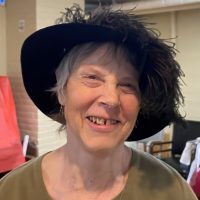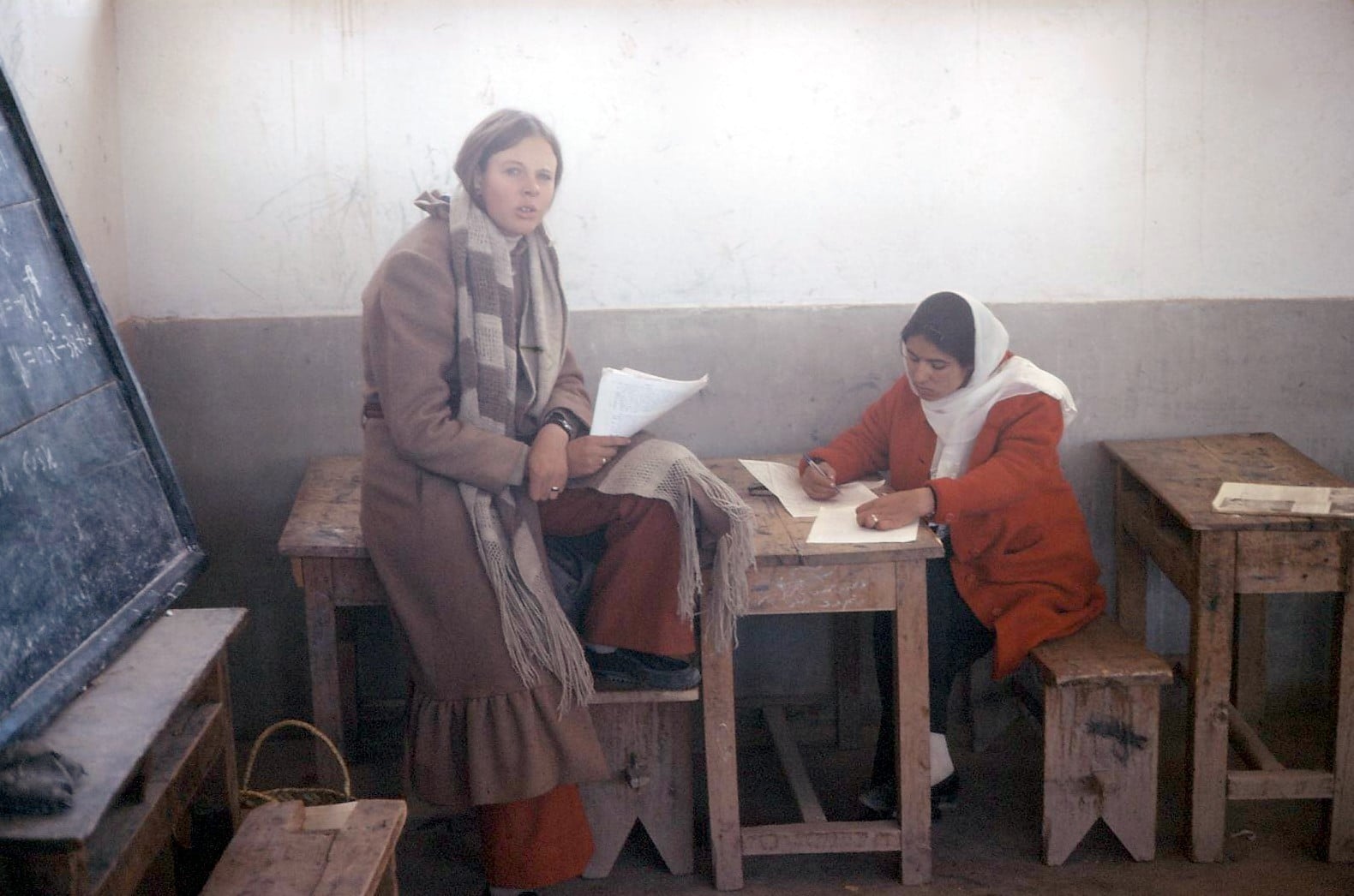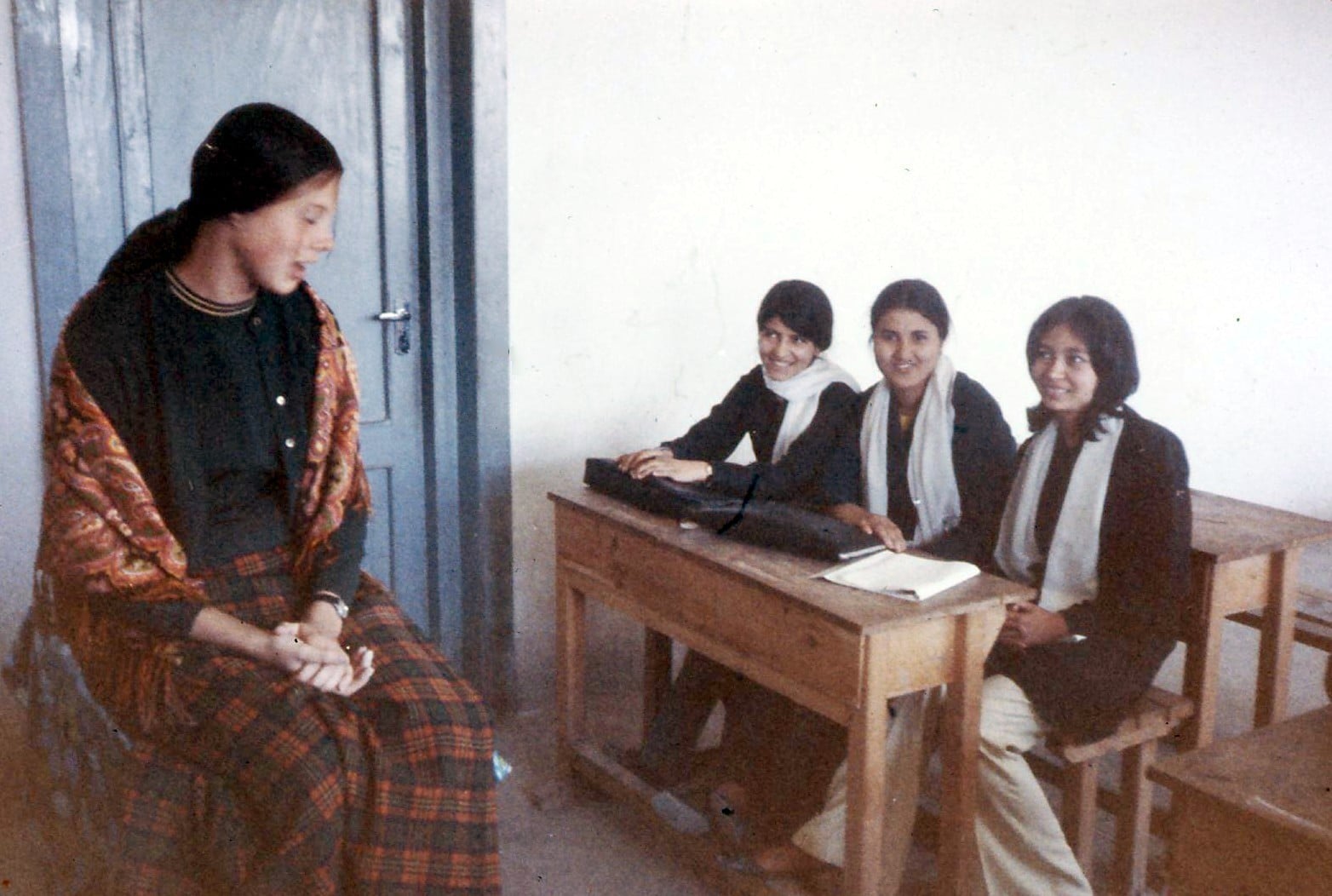My husband and I both taught English in Ghazni, an ancient city eighty-five miles southwest of Kabul. He taught in a boys’ school and I in a girls’ school. I walked to and from my school with a colleague and two of my students who were my near neighbors. We felt secure in a group. If we walked alone, we were subject to cat calls and other unpleasantness.
Our school and playground were surrounded by a high brick wall, which kept us safe from critical eyes. It was the only girls’ school in our province and served some 400 girls, from kindergarteners to twelfth graders. Most were from relatively well-to-do families with educated, progressive fathers. In those days (before the Soviet invasion of 1979, before the Taliban, and before the involvement of the United States in our longest war) it was possible for a few privileged Afghan girls to go to school.
Most of my colleagues were women. Only half a dozen, including the headmaster, the religion teacher, and a physics teacher, were male. My students wore uniforms which established their identities as schoolgirls and made it legitimate for them to appear in public without the all-concealing veil or burkha. They wore black trousers, long-sleeved black tunics, and white headscarves. My female colleagues wore similar uniforms, but theirs were dark blue instead of black. I did not wear a uniform but dressed modestly in long or elbow-length sleeves and calf- or ankle-length skirts. When school was not in session, if my students or female colleagues had business outside the home, they wore a burkha and enlisted a male relative as an escort.
My husband and I went to Kabul once a month for rest and relaxation and to stock up on coffee, powdered milk and other imported commodities. On such trips, we always stopped by Peace Corps headquarters to pick up mail and check out library books. On one visit to headquarters, I scored a stack of discarded American fashion magazines.
In my classes, my students and I pored over them. I focused on getting the students to read English words I thought they would know. They were more interested in the clothing advertisements and the images of women. They were fascinated by the short skirts, sleeveless dresses, and plunging necklines in the magazines. When we paused on an advertisement for Maidenform bras, one student asked me why I didn’t wear a bra. I assured her I did wear one. She pointed to my relatively flat chest and asked, “If you wear a bra, why don’t your breasts seem larger?” I tried to explain that I didn’t wear a padded bra, but I couldn’t make her understand why I didn’t.
Later, I worried that I had been guilty of promoting Western fashions and Western materialism. Bras, lipstick, and high heels, I felt, were symbols of female servitude. I wanted to help liberate Afghan women, not sell them high heels or bras. I hoped my students would be able to play larger public roles within Afghan society than their mothers had been able to play. I hoped some of my students might become teachers, or nurses, or even doctors like the Afghan woman who ran Ghazni’s family planning clinic. A couple of my seniors, with my encouragement, were applying for admission to Kabul University. Initially, I wondered why my students needed to learn English. But I soon came to see that a knowledge of English could open doors for students with serious ambitions.
The sad irony is that in 2025, Afghan girls are not permitted to go to school at all.
This story is an excerpt from Afghanistan at a Time of Peace by Robin Varnum Peace Corps Writers 2021





